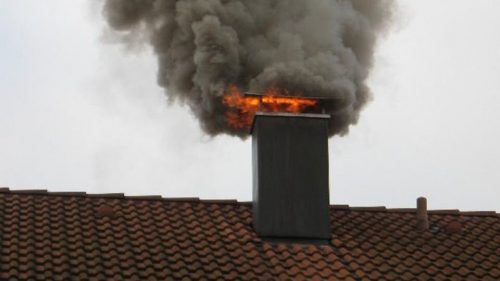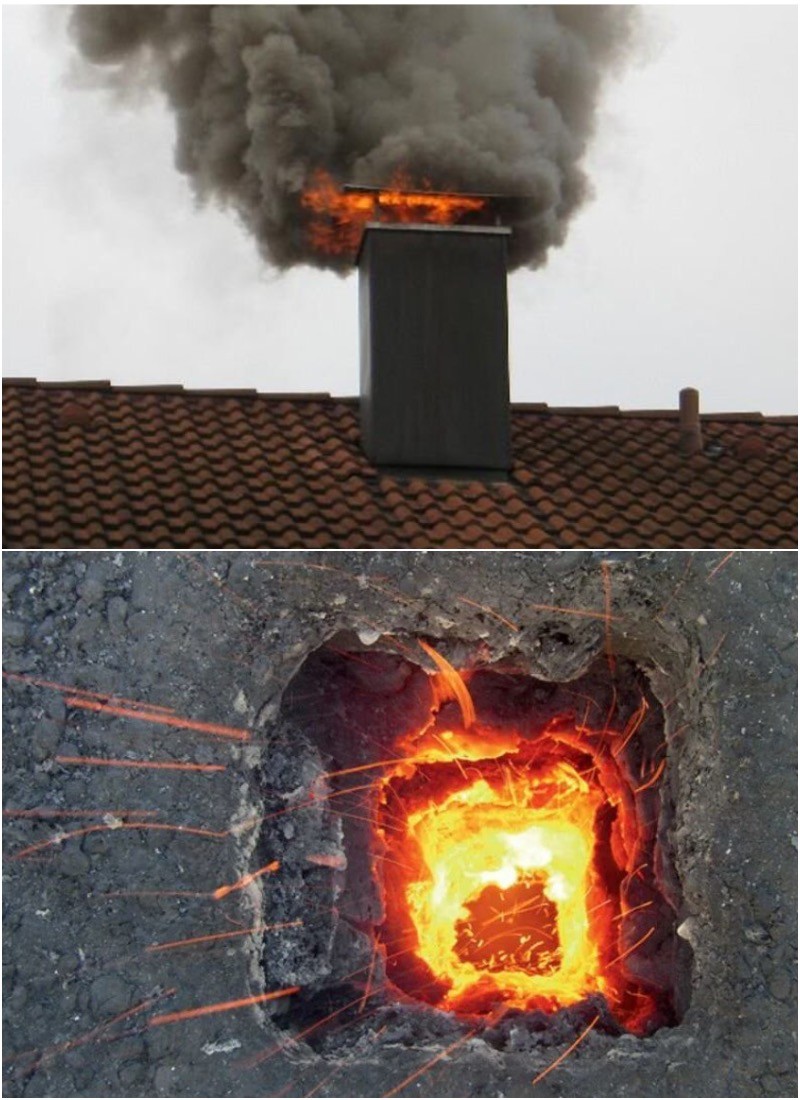ADVERTISEMENT
Is it reasonable to assume that a simple accumulation of soot in the chimney can cause a fire? It turns out that this is a common phenomenon. After all, soot, which is 98% carbon, is almost indistinguishable from coal. Let’s see what happens.
Imagine a situation: you haven’t cleaned the chimney of your stove or boiler for a long time and you notice that the air flow has weakened. This is the first sign that carbon deposits have reduced the space for smoke. To increase the draft, open the ash pan and the valve, and this is where the problem begins. As the oxygen content in the pipe increases, the temperature rises rapidly, and the carbon particles absorbed by the increased draft cause the soot to ignite, which may go unnoticed. Often, the first signs of impending trouble are a buzzing in the chimney and sparks flying out of the chimney.

As for the physics of this process, it should be noted that the combustion temperature of soot reaches +1200 °C, which leads to the destruction of the chimney and possible ignition of surrounding materials. In one of the cases described on social media, soot ignited in an asbestos-cement pipe in the absence of the owner, resulting in an explosion that destroyed the pipe.
see more on the next page Advertisement
ADVERTISEMENT
